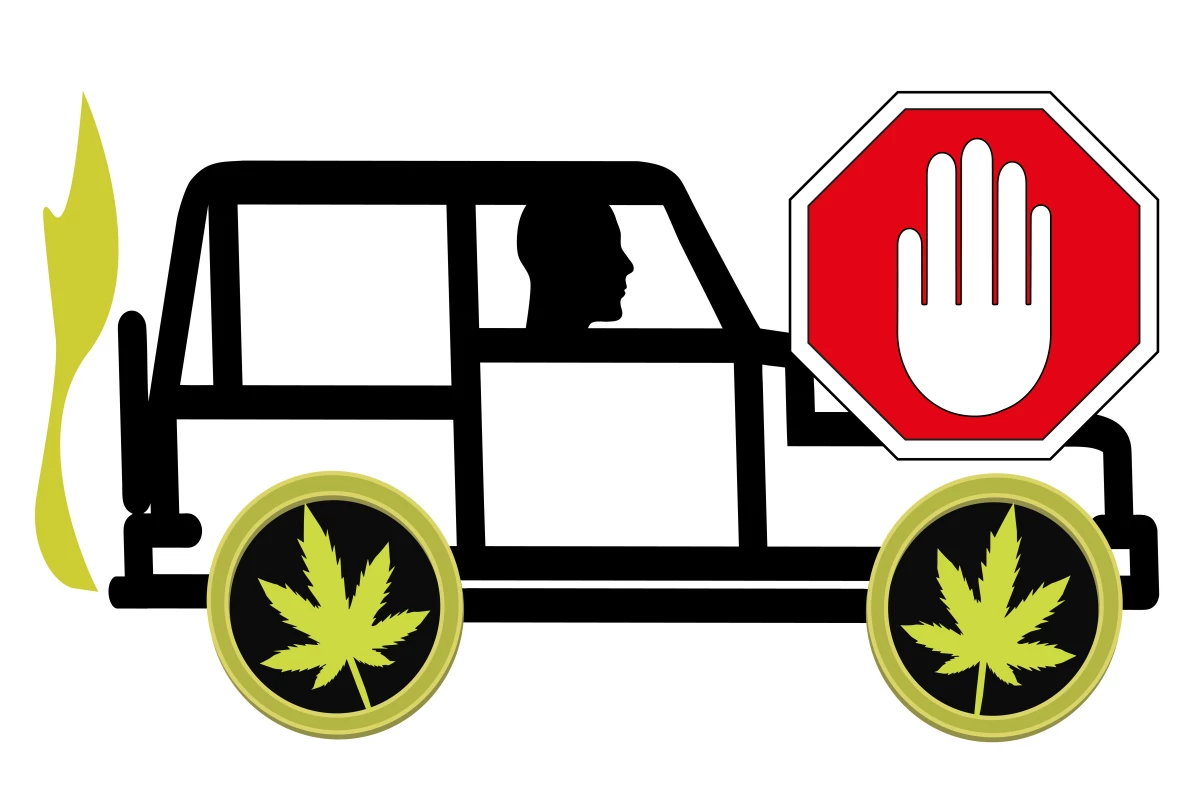A new study led by researchers from Massachusetts General Hospital has identified a pattern of brain activity that seems to correlate with impairment from cannabis intoxication. The researchers suggest this novel brain-based biomarker could be a way to accurately measure THC impairment.
With recreational marijuana laws rapidly spreading across the United States, and inevitably the rest of the world, it is becoming increasingly important to find a reliable method for identifying impairment in the same way we use a breathalyzer to determine alcohol intoxication. There are a number of marijuana breathalyzer devices in various stages of development, and scientists have figured out ways to accurately correlate THC levels in breath and saliva with THC levels in the bloodstream.
But THC is a very different drug to alcohol, and researchers have struggled to consistently correlate THC levels, in either blood or breath, with functional impairment. A recent metastudy focusing specifically on driving impairment confirmed this discordancy, finding no relationship between THC concentrations in a body and unsafe driving.
“Companies are developing breathalyzer devices that only measure exposure to cannabis but not impairment from cannabis,” says lead author on the new study, Jodi Gilman. “We need a method that won’t penalize medical marijuana users or others with insufficient amounts of cannabis in their system to impair their performance. While it requires further study, we believe brain-based testing could provide an objective, practical and much needed solution.”
The brain-based method Gilman and colleagues uncovered arose from a study investigating brain activity changes in 169 subjects. Each subject underwent functional near-infrared spectroscopy (fNIRS) brain imaging following a dose of oral THC, or a placebo.
Prior studies have used this noninvasive and inexpensive brain imaging technique to explore the effects of THC intoxication. However, the new research looked to find out whether any previously identified brain activity patterns of THC intoxication more specifically correlated with acute impairment.
And a unique pattern was indeed found. More specifically, the researchers noted increased oxygenated hemoglobin concentration (HbO) in the prefrontal cortex directly correlated with functional impairment as measured by both self-reported questionnaires and clinically measured sobriety tests.
The same dose of THC was administered to all subjects, yet a variety of impairment measures were recorded. This, the researchers point out, affirms the discordancy between THC concentrations and impairment.
“As we showed that there was no difference in THC dose between those who became impaired from those who did not following THC, it is likely that a brain- or behavior-based metric (e.g. eye tracking or cognitive testing), rather than a per se blood or oral fluid limit of THC, is required to distinguish THC impairment from simple exposure,” the researchers conclude in the study. “Future work is warranted to determine if observed brain signatures are specific to THC intoxication-related impairment or are a more general signature of impairment.”
Using machine learning models the study demonstrated it was possible to match assessments of impairment using just fNIRS data about 76 percent of the time.
The researchers note there are now portable, wireless fNIRS devices, meaning it is entirely feasible to create some kind of easy-to-use device that can measure cannabis impairment in real-world settings. Of course, there is a lot more work to do before you’ll find police scanning your brain for cannabis impairment on the side of the road.
It is likely, the researchers say, that the big challenge moving forward is not technological but rather the complexity of brain physiology. A number of factors could hypothetically influence blood flow in the prefrontal cortex, so in the short term this kind of brain activity impairment test may be most useful when performed in conjunction with other tests. A positive reading on a THC breathalyzer could then possibly lead to a quick roadside fNIRS test for impairment, for example.
“Our research represents a novel direction for impairment testing in the field,” says Gilman. “Our goal was to determine if cannabis impairment could be detected from activity of the brain on an individual level. This is a critical issue because a ‘breathalyzer’ type of approach will not work for detecting cannabis impairment, which makes it very difficult to objectively assess impairment from THC during a traffic stop.”
The new study was published in the journal Neuropsychopharmacology.
Source: MGH




